Meet the 'Lost Titan', also known as the Bruhathkayosaurus! This gigantic dinosaur left behind only partial or fragmentary remains and has puzzled scientists trying to figure out just how big it was. The bits and pieces of this dinosaur, discovered in the Kallamedu Formation at the southern tip of India, suggest it may have been one of the largest land animals ever to roam the Earth.
The few bones that have been found, like pieces of leg bones and a sauropod vertebra picture, make scientists think this huge creature could have been as big as the famous Argentinosaurus, or maybe even as big as the greatest whales.
In this article, you'll learn some cool Bruhathkayosaurus facts that will blow your mind. Although there aren’t many complete specimens of similar dinosaurs, there is still so much to learn about this prehistoric creature!
Bruhathkayosaurus Interesting Facts
How do you pronounce 'Bruhathkayosaurus'?
The name is pronounced as 'Bru-hath-kay-o-saur-us'.
What type of dinosaur were they?
The Bruhathkayosaurus was a type of sauropod, the big, friendly giant of the dinosaur world. These dinosaurs were plant-eaters with super long necks and tails, roaming around munching on high tree leaves.
In which geological period did the Bruhathkayosaurus roam the Earth?
The Bruhathkayosaurus roamed the Earth during the Late Cretaceous Period (around 70 million years ago), specifically in the Maastrichtian stage. This was a time when dinosaurs were the giants of the planet.
When did they become extinct?

The Bruhathkayosaurus, like all other dinosaurs, met its end when the Cretaceous Period came to a close (about 66 million years ago). This was due to the massive Cretaceous-Paleogene extinction event, which wiped out many species on the planet.
Where did Bruhathkayosaurus live?
The Bruhathkayosaurus once lived in the area that is now called modern-day India.
What was the Bruhathkayosaurus's habitat?
There isn't enough information to say exactly where the Bruhathkayosaurus lived. More research is needed to understand the different places this huge dinosaur might have called home.
Who did they live with?

It is still uncertain how the Bruhathkayosaurus dinosaurs hung out together or if they had special groups because more clues are still necessary. Scientists are on a mission to learn more about how these massive dinosaurs lived and interacted with each other.
How long did a Bruhathkayosaurus live?
Scientists don't know how long a Bruhathkayosaurus could live because the fossils found are all broken up and incomplete. Hopefully, as they find more pieces and do more research, you might discover just how old these giant creatures could get.
How did they reproduce?
Just like other sauropods, Bruhathkayosaurus possibly laid eggs to have baby dinosaurs.
Bruhathkayosaurus Fun Facts
What did they look like?

Scientists don't know what the Bruhathkayosaurus looked like or its body proportions because they haven't found enough of its fossils yet. As scientists dig up more pieces in the future, you can hope to get a better picture of what this giant dinosaur's body looked like.
How many bones did a Bruhathkayosaurus have?
It's still a bit of a puzzle how many bones a Bruhathkayosaurus had because only a few of its bones have been discovered. More dinosaur hunts and careful studying might help solve this mystery and show the complete skeleton of this giant dinosaur.
How did they communicate?
It's still unknown how the Bruhathkayosaurus dinosaurs talked to each other since no one has figured that out yet. More research might help find out how these giant creatures communicated.
How big was a Bruhathkayosaurus?
The exact size of the Bruhathkayosaurus is still unknown. More studies in the future might tell you just how big this prehistoric creature was.
How fast could they move?
No one knows exactly how fast a Bruhathkayosaurus could move yet. More discoveries and research down the line might give us clues about how quickly these huge dinosaurs could walk or run!
How much did a Bruhathkayosaurus weigh?
Weight guesses for the Bruhathkayosaurus vary a lot because there are only a few fossil pieces to study, but it might have been as heavy as the heaviest dinosaurs you know about.
What were the male and female names of the species?
 How big was a Bruhathkayosaurus?
How big was a Bruhathkayosaurus?There aren't special names for male or female Bruhathkayosaurus dinosaurs; they are all just called Bruhathkayosaurus.
What would you call a baby Bruhathkayosaurus?
A baby Bruhathkayosaurus would probably be called a hatchling or juvenile, just like other baby dinosaurs.
How aggressive were they?
The behavior of the Bruhathkayosaurus, like whether it was aggressive, can't be figured out from the fossils found so far. More research is needed to learn about how it acted.
Did you know...
The name 'Bruhathkayosaurus' comes from combining some cool words. 'Bruhathkaya' comes from Sanskrit where 'bṛhat' means 'huge' and 'kāya' means 'body'. So, it's like saying 'giant body lizard' because 'sauros' in Greek means 'lizard'.
This dinosaur species is named after a famous British fossil hunter, Charles Alfred Matley, who found lots of dinosaur bones in India.
Mickey Mortimer and other dinosaur experts have posted tentative estimates by looking at the existing bones with similar dinosaurs to guess how big the Bruhathkayosaurus might have been.
Way back in 1978, the main piece of the Bruhathkayosaurus dinosaur was found near the very tip of India, in a place called the Tiruchirappalli district, not far from a little village named Kallamedu. This exciting discovery happened right in the southern part of the country!
The fossils of the Bruhathkayosaurus were dug up from the old layers of rock from the Late Cretaceous Period (around 70 million years ago), known as the Maastrichtian-Stage, at a place called Kallamedu Formation.
Scientists have come up with formulas to guess the full femur length of the Bruhathkayosaurus using different bone measurements. They discovered that in sauropods, the femur length to tibia length scales differently, with the femur growing slower compared to the tibia.
Bits and pieces of this dinosaur (fragmentary sauropod remains) suggest that the Bruhathkayosaurus was one of the largest dinosaurs ever, maybe even bigger than any titanosaur you know about.
Without relatively complete specimens the clues found are crucial in helping scientists imagine what this enormous creature, the Bruhathkayosaurus, might have looked like and how it was built.
The other prehistoric animals that lived at the same time would have looked tiny next to it, showing just how dominant the Bruhathkayosaurus was in its ecosystem.
By comparing existing bones with those of other big dinosaurs, scientists can make smart guesses about what the Bruhathkayosaurus looked like. The fragmentary remains, including a huge tibia (that's a leg bone), show that this dinosaur was big, and help experts figure out how large it might have been.
These size estimates are super important for understanding just how massive this giant from the Late Cretaceous was. While these guesses are still being checked, they think the Bruhathkayosaurus could have been one of the largest of all dinosaurs, maybe even bigger than the enormous Argentinosaurus.
This dinosaur is often compared to other fragmentary sauropod fossils; however, because some of its fossil pieces were lost later on, scientists are still unsure about exactly where it fits in the dinosaur family tree.
With weight projections hinting at a massive 242,508-374,786 lb (110,000–170,000 kg), the Bruhathkayosaurus might have competed with the record-holder blue whale to be one of the largest creatures ever to roam the Earth.
As is common with dinosaur finds, no soft tissues survive from the Bruhathkayosaurus; researchers have to rely on the tougher parts like bones to learn about it.
Line drawings are the only way to see what the original Bruhathkayosaurus might have looked like since the real bones have disappeared over the years.
Back in 1989, scientists named Yadagiri and Ayyasami were the first to write about the Bruhathkayosaurus in a science book, but their story of the dinosaur called a published description, was missing a lot of details.
So far, no one has come up with a complete body mass estimate for the Bruhathkayosaurus that has been shared in science books, and the early guesses that were made have been taken back or are not trusted anymore.
At first, people thought the Bruhathkayosaurus was a type of meat-eating dinosaur like the Allosaurus, and they weren't sure where it fit in the dinosaur family tree.
In 1995, a scientist named Chatterjee did some digging and found out that the Bruhathkayosaurus was a titanosaur sauropod, which is a kind of giant plant-eating dinosaur.
In a 2017 report, researchers Galton and Ayyasami explained how the Bruhathkayosaurus fossils started to fall apart in their protective covers during transport to the Geological Survey of India (GSI) and have been lost since then.
FAQs
Is Bruhathkayosaurus a real dinosaur species?
The Bruhathkayosaurus might be a mysterious type of giant sauropod dinosaur found in the Kallamedu Formation in India. At first, the bits and pieces found, including parts of the hip, broken leg and arm bones, and a piece of backbone, were thought to be from a meat-eating theropod dinosaur. But later, scientists figured out they were actually from a titanosaur sauropod.
There's still a lot of debate among scientists about whether this dinosaur is a new kind or not, with some calling it an unspecified sauropod or even using the term 'nomen dubium', which means its true nature is still in question.
Was this dinosaur a sauropod or a theropod?
In 1995, a scientist named Chatterjee found out that the Bruhathkayosaurus was a part of the titanosaur group; those are the huge, long-necked dinosaurs that ate plants, not meat!
This cool finding showed that the Bruhathkayosaurus was one of the massive, gentle giants of the dinosaur world, hanging out in the Titanosauria group, known for being some of the largest sauropods that ever walked the Earth.
What is the difference between Bruhathkayosaurus and Argentinosaurus?
Reports about the Bruhathkayosaurus, found in India's Kallamedu Formation, say that its tibia, which is a type of leg bone, was even 29% bigger than that of the Argentinosaurus. This has led some dinosaur experts to think that the Bruhathkayosaurus could have been a much bigger dinosaur than it was first thought to be.
Its fossils disappeared and there's some doubt about whether the pieces that were found are dinosaur bones or petrified wood. On the other hand, the Argentinosaurus doesn't cause as much debate among scientists because its fossils are considered more reliable.
Even though there aren't many Argentinosaurus fossils around, the ones that exist have helped scientists make more accurate guesses about how big it was. This has allowed for better reconstructions and measurements of this giant dinosaur.
The Bruhathkayosaurus is a dinosaur that has captured the imagination of many because it might have been one of the biggest dinosaurs ever. Known only from fragmentary remains, this dinosaur presents a fascinating chapter in the study of prehistoric life, particularly in terms of its phylogenetic and anatomical identity.
The Bruhathkayosaurus continues to be a significant figure in paleontology, illustrating the incredible variety and amazing nature of dinosaurs.
Related Articles Around the Web

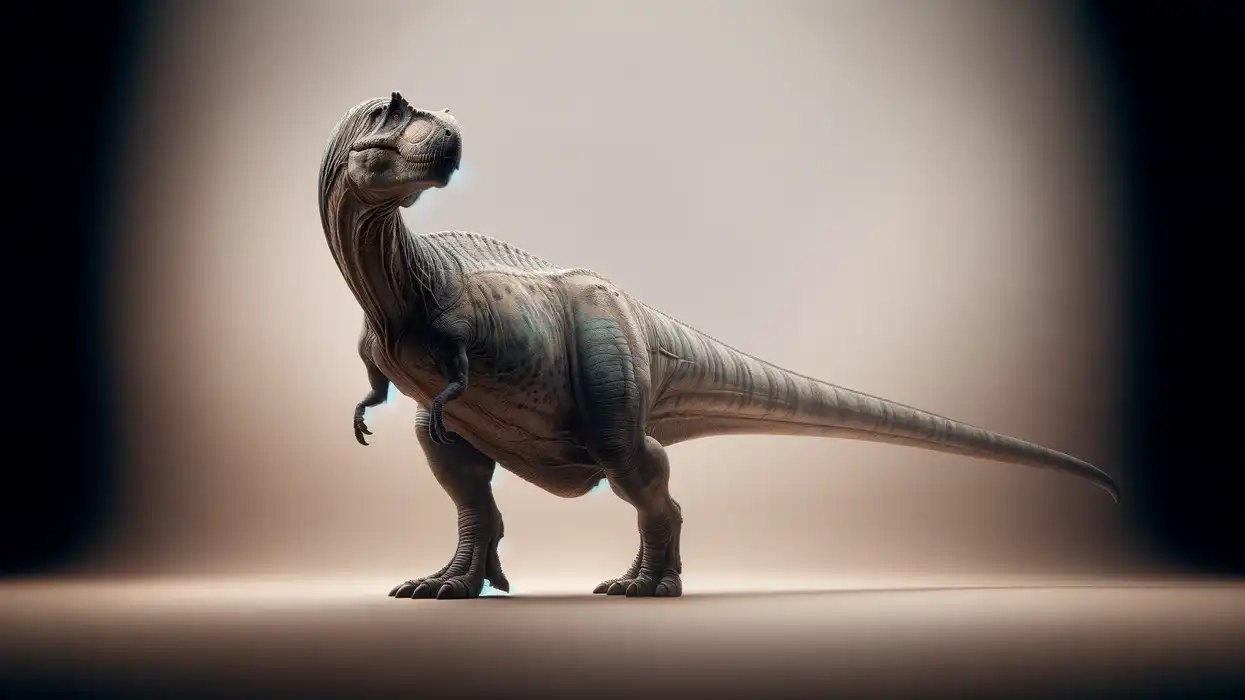
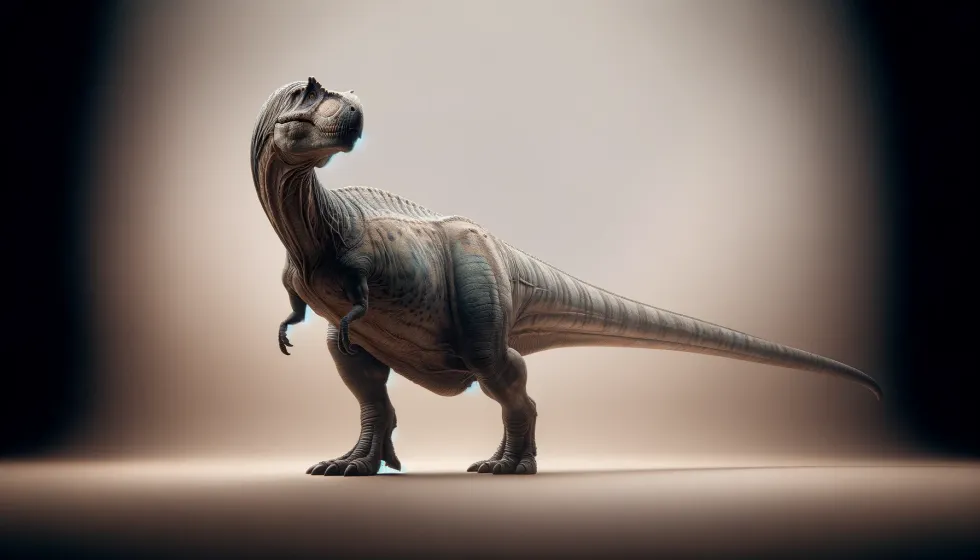

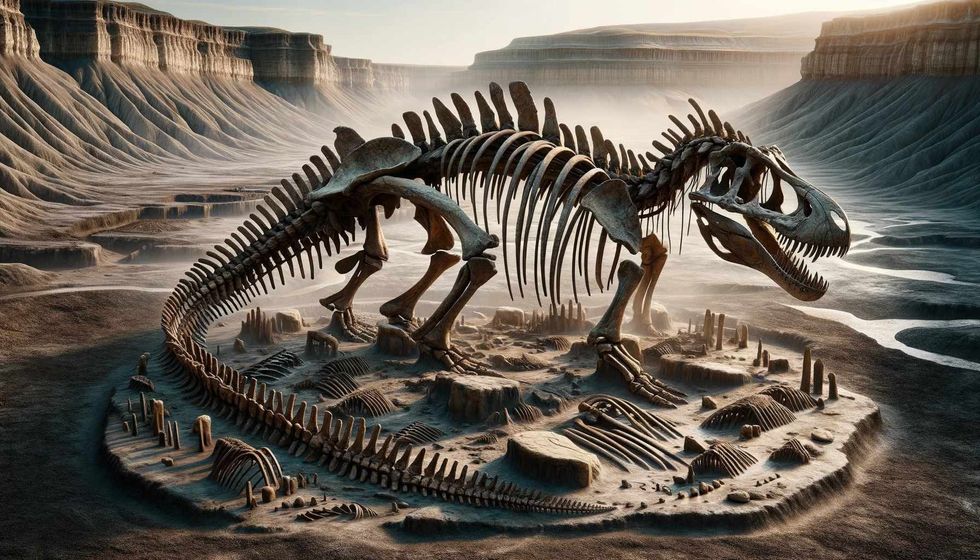
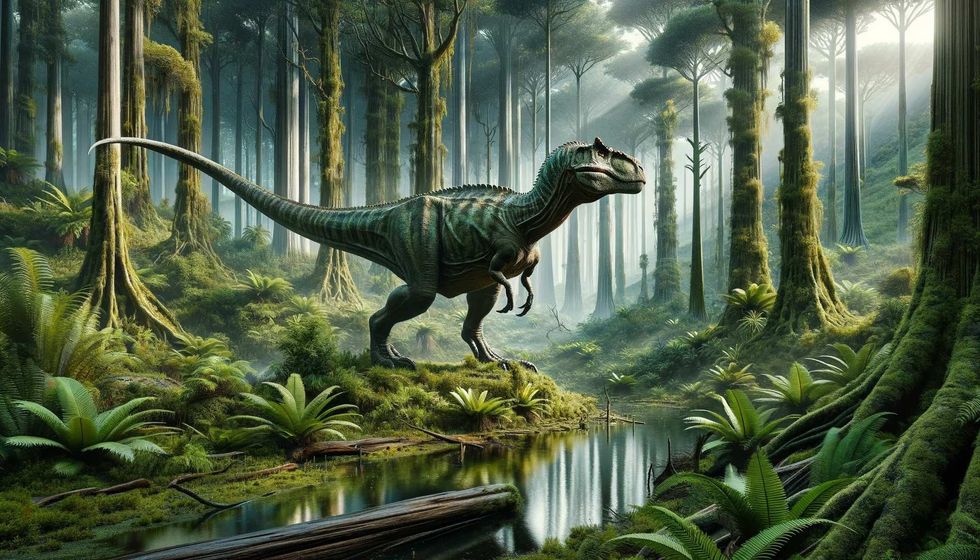
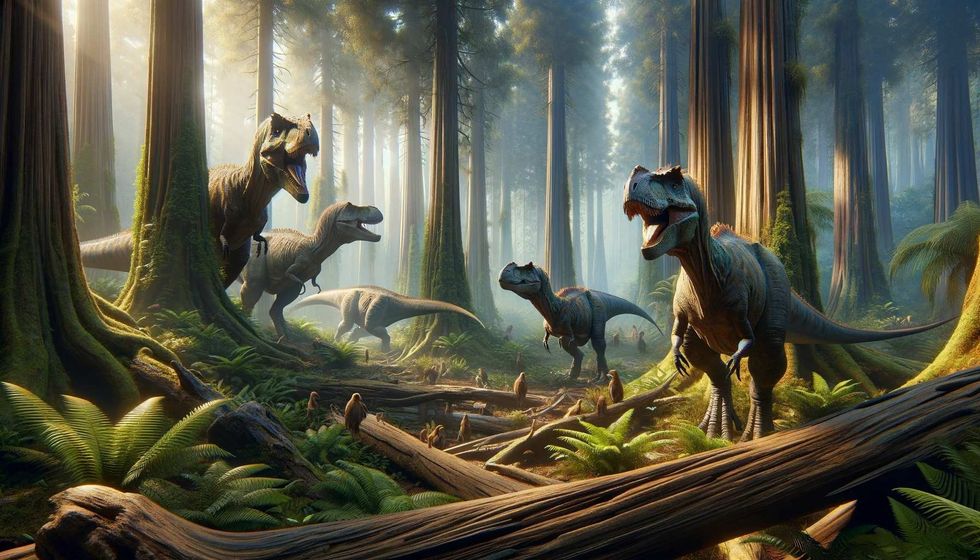
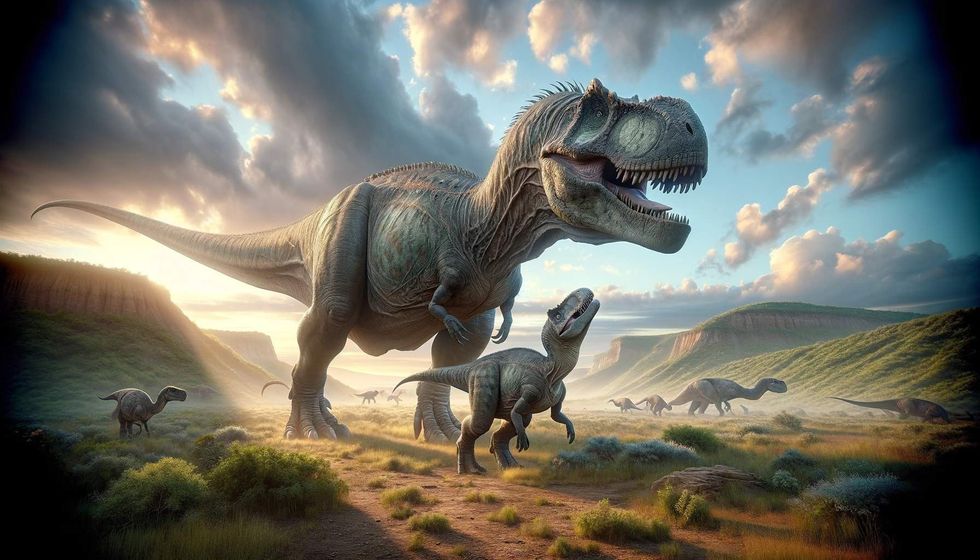 How big was a Bruhathkayosaurus?
How big was a Bruhathkayosaurus?

